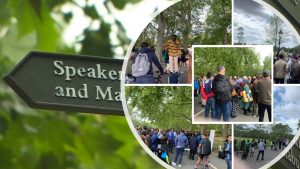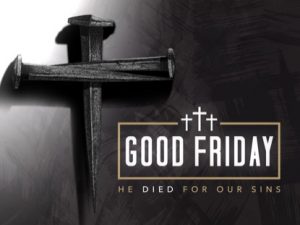Archive for the ‘General News’ Category
Speakers Corner.
This week sees a change in the weather but many of the faces and the arguments at Speakers Corner will no doubt remain the same – so looking for some variation of content or persons to fuel this weeks discussions – but one-to-one evangelism often throws up something or someone unexpected!
With Jamie Broadey at Hyde Park, Speakers Corner. London.
‘BodyBuilders’ Houseparty
This weekend we should have been heading down to Bournemouth for another brilliant ‘BodyBuilders’ Houseparty, alas due to Covid-19 regulations this will not be happening!
So here is a blast from the past, a few memories of the good times we have enjoyed over the years.
For those who can make it, see you in 2022.
Noah’s Ark Carer & Toddler Group
Good News & Bad News – Penny’s Noah’s Ark Carer & Toddler Group is back in the building, but due to Covid-19 restrictions we have limited places and we are already full!
Sorry if you are unable to join with us at the moment, hopefully we can add more places over the next few months.
Penny text to say “ yes Noah’s Ark was back on this morning, delighted parents and excited children!! One little girl just kept jumping in excitement from the moment she walked in the door and all through the story. Some lockdown babies looking a bit overwhelmed but most seem to enjoy it and want to come back. One new contact amongst the nine families. Weird to have such a pared down version of our normal Thursdays, but certainly better than online!! Pray that families and helpers stay safe, and no difficulties with people complying with Covid rules, thank you”
West End Chapel
AM: Looking forward to preaching this morning at West End Chapel. St Annes Grove, Fareham PO14 1JX.
Time:10.00am
Subject: The Glory of the Resurrection
Bible passage: 1 Corinthians chapter 15 verse 1-19.
PM: Good to be back at Speakers Corner, Hyde Park, London.
An afternoon/evening of one-to-one evangelism and a chance to support the work of the Christians preachers/apologists.
Online Holiday Club.
All over already! Good fun and always good to meet new people at the online Holiday Club.
Each day we explored a European city (Gare du Nord in Paris, the busiest station in Europe, Rome and its many amazing restaurants, the Swiss Alps, the distinctive shape of the Matterhorn & Hyde Park in London, the largest of four Royal Parks in the very heart of the city. as well as discovering some of the places that Jesus visited (Entering busy Jerusalem, God’s Son received special worship, The last supper, Mount Calvary & the garden tomb). The Backpackers daily programme focuses on awesome accounts from the Gospel of Matthew.
Hopefully next time back in the building!
Duncan Road Church. Southampton.
Backpackers Easter Holiday Club ONLINE!
Backpackers Easter Holiday Club ONLINE!
What: Online Activities, Games, Songs, DVD’s, Bible Stories, Crafts and lots more!
When: Tuesday 6th to Friday 9th April 2021
Time: 10.00am to 11.00am
Who?: Children from Reception to school year 5 welcome
How Much?: Its free!
Each day we will explore a European city (Gare du Nord in Paris, the busiest station in Europe, Rome and its many amazing restaurants, the Swiss Alps, the distinctive shape of the Matterhorn & Hyde Park in London, the largest of four Royal Parks in the very heart of the city. as well as discovering some of the places that Jesus visited (Entering busy Jerusalem, the home where Jesus, God’s Son received special worship, The last supper, Mount Calvary & the garden tomb)
The Backpackers daily programme focuses on awesome accounts from the Gospel of Matthew.
The ZOOM link can be found on the Duncan Road Church website: CLICK HERE (click on the Holiday Club box).
For further information email Gordon & Penny at: contact@drchurch.info
Easter Sunday
What is the Proof and Evidence of Jesus’ Resurrection?
Of all the teachings of Christianity, no doctrine is more central than the bodily resurrection of Jesus Christ from the dead. The truth of the resurrection has been attacked from every angle. New books and television media regularly appear questioning the truth of the resurrection, re-hashing old theories about what happened to Jesus’ body. Since the resurrection is crucial to Christianity, Christians ought to be able to give answers to the inevitable questions about the truth of the resurrection with proof and evidence.
Historically Credible Accounts
The first step in defending the resurrection from its detractors is to establish the fact of the historical events that took place as conveyed in the Gospels. As philosopher William Lane Craig notes in his book Reasonable Faith, “The issue is whether the gospel narratives are historically credible accounts or unhistorical legends.”
The Empty Tomb
One of the easiest parts of the resurrection data to establish is the fact that the tomb is empty. Because the location of Jesus’ burial was known to those living in Jerusalem, it is unlikely that they would have believed the apostles’ claims about the resurrection of Christ if there was not an empty tomb. Jesus’ burial is widely attested in early, independent testimonies, both biblical and extra-biblical.
The fact that women are primary witnesses of the empty tomb in the Gospel accounts is further evidence of their authenticity. This is because, as is often noted, women were not considered reliable witnesses in first-century Jewish culture, so it would have been foolish for the authors to fictionally construct an account involving women in order to gain credibility.
Matthew 28:11 speaks of a myth that was spread among the Jews concerning the body of Christ. Apparently, the Jews were saying the disciples stole the body of Christ. This is significant because the Jews did not deny the tomb was empty, but instead sought an alternative explanation to the resurrection. The emptiness of the tomb is a widely attested historical fact.
However, just because the tomb of Jesus Christ was empty does not necessarily mean the resurrection happened. There are four alternative hypotheses to the resurrection that have been advanced over the years:
1. The Conspiracy Hypothesis
The conspiracy hypothesis says that the disciples stole the body of Jesus and continued to lie about his appearances to them. According to this account, the resurrection was a hoax.
This hypothesis is not commonly held in modern scholarship for several reasons:
This hypothesis does not take into account that the disciples believed in the resurrection. It is highly unlikely that numerous disciples would have been willing to give up their lives defending a fabrication.
It is unlikely that the idea of resurrection would have entered the minds of the disciples, as such an event was not connected to the Jewish idea of a Messiah. The scholar William Lane Craig writes, “If your favourite Messiah got himself crucified, then you either went home or else you got yourself a new Messiah. But the idea of stealing Jesus’ corpse and saying that God has raised him from the dead is hardly one that would have entered the minds of the disciples.”
This hypothesis cannot account for the post-resurrection appearances of Christ.
2. The Apparent Death Hypothesis
The second hypothesis attempting to explain away the resurrection is the apparent death hypothesis. This view says Jesus was not completely dead when he was removed from the cross. Once in the tomb, Jesus was revived and escaped, thus convincing the disciples of his resurrection.
This view is difficult to hold for a few reasons:
It is unlikely that a half-dead man would have been capable of even getting up to walk, much less moving the huge stone that sealed the tomb, over-powering Roman guards, and fleeing from sight.
This theory cannot account for the disciples’ attribution of resurrection to Christ, for if they had seen him after he was revived, they would have merely thought he had never died.
It is also foolish to think the Romans, who had perfected the art of executing people, would have let one slip by without ensuring he was dead.
Finally, given the physical torture described in the Gospel accounts, it is highly unlikely that Jesus could have survived crucifixion.
3. The Wrong Tomb Hypothesis
The wrong tomb hypothesis suggests that the women had gotten lost on their way to Jesus’ tomb and accidentally stumbled upon the caretaker of an empty tomb. When the caretaker said, “Jesus is not here,” the women were so disoriented they fled, their story later being developed into a resurrection myth.
Like the other theories, virtually no reputable scholars hold to this view. There are at least three reasons:
First, this theory does not explain the post-resurrection appearances, and it is spurious to think that such a simple mistake would have led a first-century Jew to think a resurrection had happened.
In light of the early evidence that is available concerning the location of Jesus’ tomb, it is almost impossible that the women would have confused its location.
This hypothesis emphasizes that the caretaker of the tomb said that Christ was not there, but it passes over the next phrase: “He is risen!”
4. The Displaced Body Hypothesis
The displaced body hypothesis says Joseph of Arimathea placed Jesus’ body in his own tomb, but later moved it to the criminal’s graveyard. The disciples were not aware that Jesus’ body had been moved and therefore wrongly inferred that he had risen from the dead.
Because of the spurious nature of this theory, virtually no modern scholars hold to it:
This theory cannot account for the post-resurrection appearances of Christ or the origin of the Christian faith.
It is unclear why Joseph would not have corrected the error of the disciples by simply showing them where he had moved the body of Jesus.
The criminal graveyard, most likely, was quite close to the crucifixion site, so it would have made little sense why Joseph would not have simply buried Jesus there in the first place. In fact, it was against Jewish law to allow a body to be moved after it had already been buried.
The Post-Resurrection Appearances
In 1 Corinthians, an authentic letter composed by a man acquainted with the first disciples, the Apostle Paul claims that numerous people saw Jesus alive after his death (1 Corinthians 1:1).
It is fairly indisputable that Jesus actually appeared to the people that Paul mentions. Even the notorious New Testament critic Bart Ehrman admits, “we can say with some confidence that some of his disciples claimed to have seen Jesus alive.”
The gospels all speak of post-resurrection appearances of Christ. It would be quite ridiculous to suggest that each of these events was a hallucination. Few scholars argue, therefore, that on different occasions different groups of people had experiences of seeing Jesus. They therefore question whether the experiences were actual physical, bodily appearances of Christ. However, Paul leaves no room for a merely psychological experience. His theology of the resurrected body ensures that he meant that Christ actually, physically appeared.
The resurrection is the most plausible explanation for the postmortem appearances of Christ. The alternative—the disciples were hallucinating—says nothing to explain the empty tomb. Nor does it explain the disciples’ belief in the resurrection. In typical psychological postmortem experiences, the person having the experience rarely would think that a dead person actually returned physically to life. As New Testament scholar N.T. Wright argues, postmortem appearances in the ancient world would be more evidence that the person was dead than that he was alive.
The physical resurrection of Jesus proves to be the best explanation for the postmortem appearances described in 1 Corinthians 1:1.
The Existence of Christianity
The fact that Christianity started and grew is also evidence for the resurrection. For Jews, the Messiah was viewed as a figure that would be triumphant and rule on David’s throne, not a figure that would be crucified and die.
The resurrection of Jesus undid the catastrophe of the crucifixion. The Messiah, who had died, is risen! The resurrection validated and verified the claims Jesus had made about his own identity. The origin of Christianity rests solely on the fact that Jesus Christ rose from the dead.
It stands to reason that Jesus Christ did in fact rise from the dead victoriously on the third day after his death. No alternative hypothesis can adequately explain the empty tomb, the postmortem appearances of Jesus, and the origin of the Christian faith.
(from an article by Justin Holcomb).
Good Friday
What is Good Friday and why do we call Good Friday “good,” when it is such a dark and bleak event commemorating a day of suffering and death for Jesus?
For Christians, Good Friday is a crucial day of the year because it celebrates what we believe to be the most momentous weekend in the history of the world. Ever since Jesus died and was raised, Christians have proclaimed the cross and resurrection of Jesus to be the decisive turning point for all creation. Paul considered it to be “of first importance” that Jesus died for our sins, was buried, and was raised to life on the third day, all in accordance with what God had promised all along in the Scriptures (The Bible: 1 Corinthians 15:3).
On Good Friday we remember the day Jesus willingly suffered and died by crucifixion as the ultimate sacrifice for our sins (The Bible: 1 John 1:10). It is followed by Easter, the glorious celebration of the day Jesus was raised from the dead, heralding his victory over sin and death and pointing ahead to a future resurrection for all who are united to him by faith (The Bible: Romans 6:5).
What is the Meaning of Calling it “Good” Friday?
Still, why call the day of Jesus’ death “Good Friday” instead of “Bad Friday” or something similar? Some Christian traditions do take this approach: in German, for example, the day is called Karfreitag, or “Sorrowful Friday.” In English, in fact, the origin of the term “Good” is debated: some believe it developed from an older name, “God’s Friday.” Regardless of the origin, the name Good Friday is entirely appropriate because the suffering and death of Jesus, as terrible as it was, marked the dramatic culmination of God’s plan to save his people from their sins.
In order for the good news of the gospel to have meaning for us, we first have to understand the bad news of our condition as sinful people under condemnation. The good news of deliverance only makes sense once we see how we are enslaved. Another way of saying this is that it is important to understand and distinguish between law and gospel in Scripture. We need the law first to show us how hopeless our condition is; then the gospel of Jesus’ grace comes and brings us relief and salvation.
In the same way, Good Friday is “good” because as terrible as that day was, it had to happen for us to receive the joy of Easter. The wrath of God against sin had to be poured out on Jesus, the perfect sacrificial substitute, in order for forgiveness and salvation to be poured out to the nations. Without that awful day of suffering, sorrow, and shed blood at the cross, God could not be both “just and the justifier” of those who trust in Jesus (Romans 3:26). Paradoxically, the day that seemed to be the greatest triumph of evil was actually the deathblow in God’s gloriously good plan to redeem the world from bondage.
The cross is where we see the convergence of great suffering and God’s forgiveness. Psalms 85:10 sings of a day when “righteousness and peace” will “kiss each other.” The cross of Jesus is where that occurred, where God’s demands, his righteousness, coincided with his mercy. We receive divine forgiveness, mercy, and peace because Jesus willingly took our divine punishment, the result of God’s righteousness against sin. “For the joy set before him” (The Bible: Hebrews 12:2) Jesus endured the cross on Good Friday, knowing it led to his resurrection, our salvation, and the beginning of God’s reign of righteousness and peace.
Good Friday marks the day when wrath and mercy met at the cross. That’s why Good Friday is so dark and so Good.
Good Friday Bible Verses
Romans 5:6-10 – “You see, at just the right time, when we were still powerless, Christ died for the ungodly. Very rarely will anyone die for a righteous person, though for a good person someone might possibly dare to die. But God demonstrates his own love for us in this: While we were still sinners, Christ died for us. Since we have now been justified by his blood, how much more shall we be saved from God’s wrath through him! For if, while we were God’s enemies, we were reconciled to him through the death of his Son, how much more, having been reconciled, shall we be saved through his life!”
1 Peter 2:24 – “He himself bore our sins” in his body on the cross, so that we might die to sins and live for righteousness; “by his wounds you have been healed.”
Isaiah 53:3-5 – “He was despised and rejected by mankind, a man of suffering, and familiar with pain. Like one from whom people hide their faces he was despised, and we held him in low esteem. Surely he took up our pain and bore our suffering, yet we considered him punished by God, stricken by him, and afflicted. But he was pierced for our transgressions, he was crushed for our iniquities; the punishment that brought us peace was on him, and by his wounds we are healed.”
Matthew 27 – The Crucifixion and Death of Jesus Christ.
(from an article by Justin Holcomb).

















